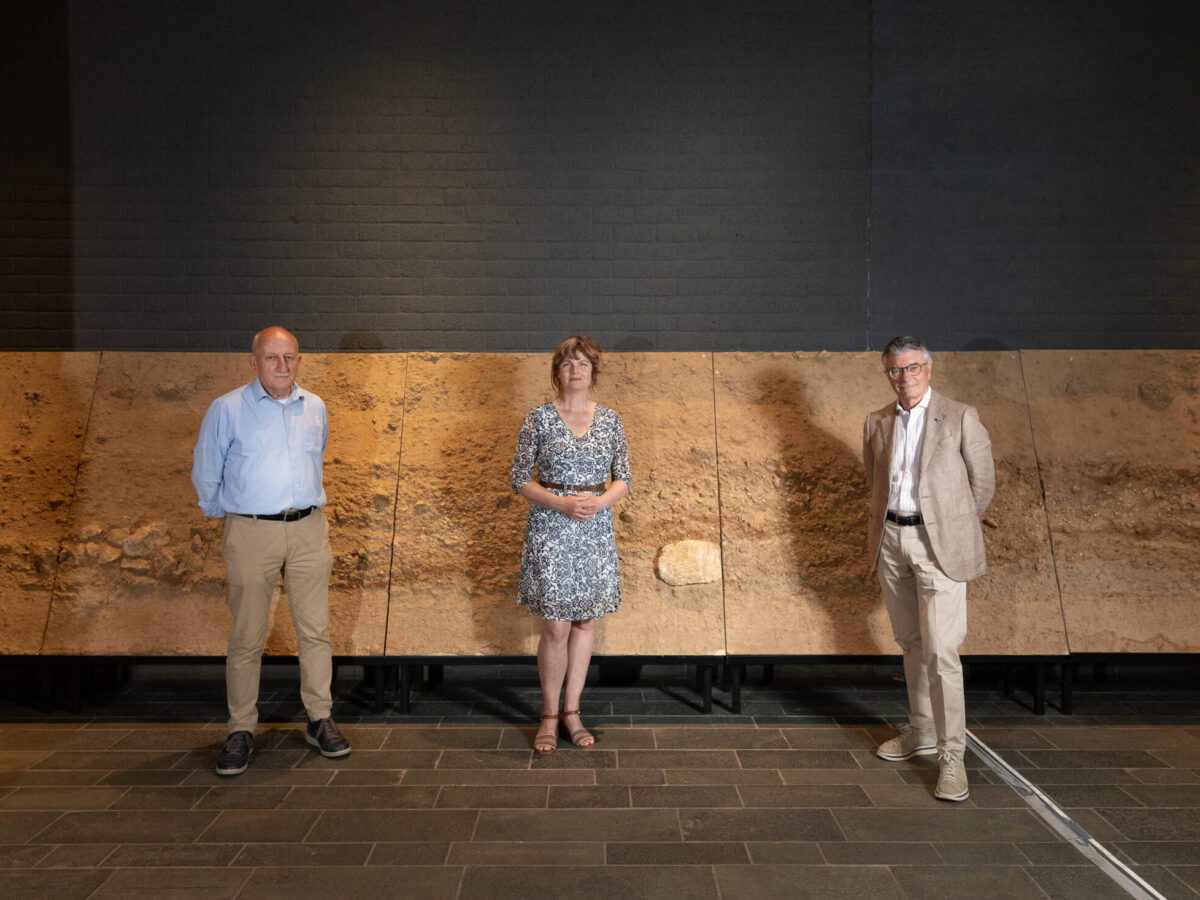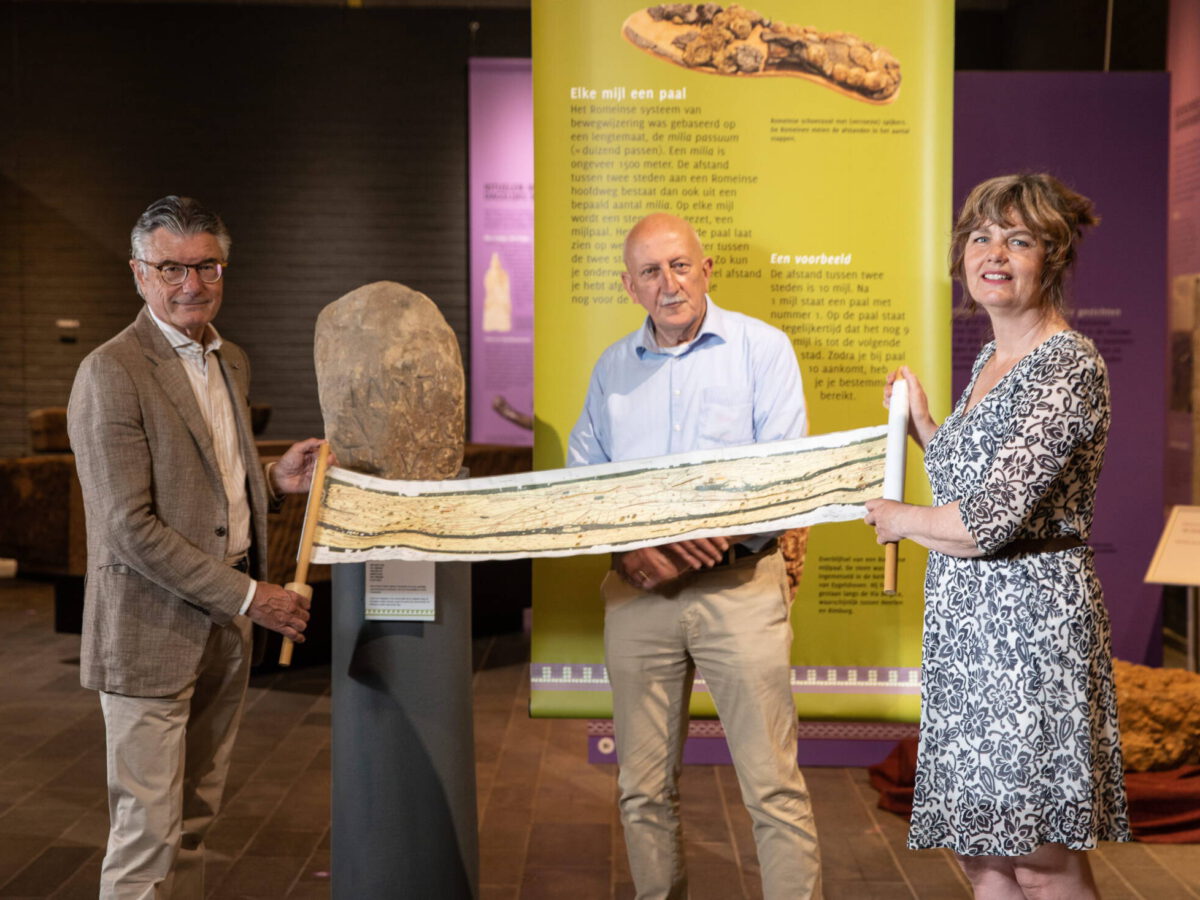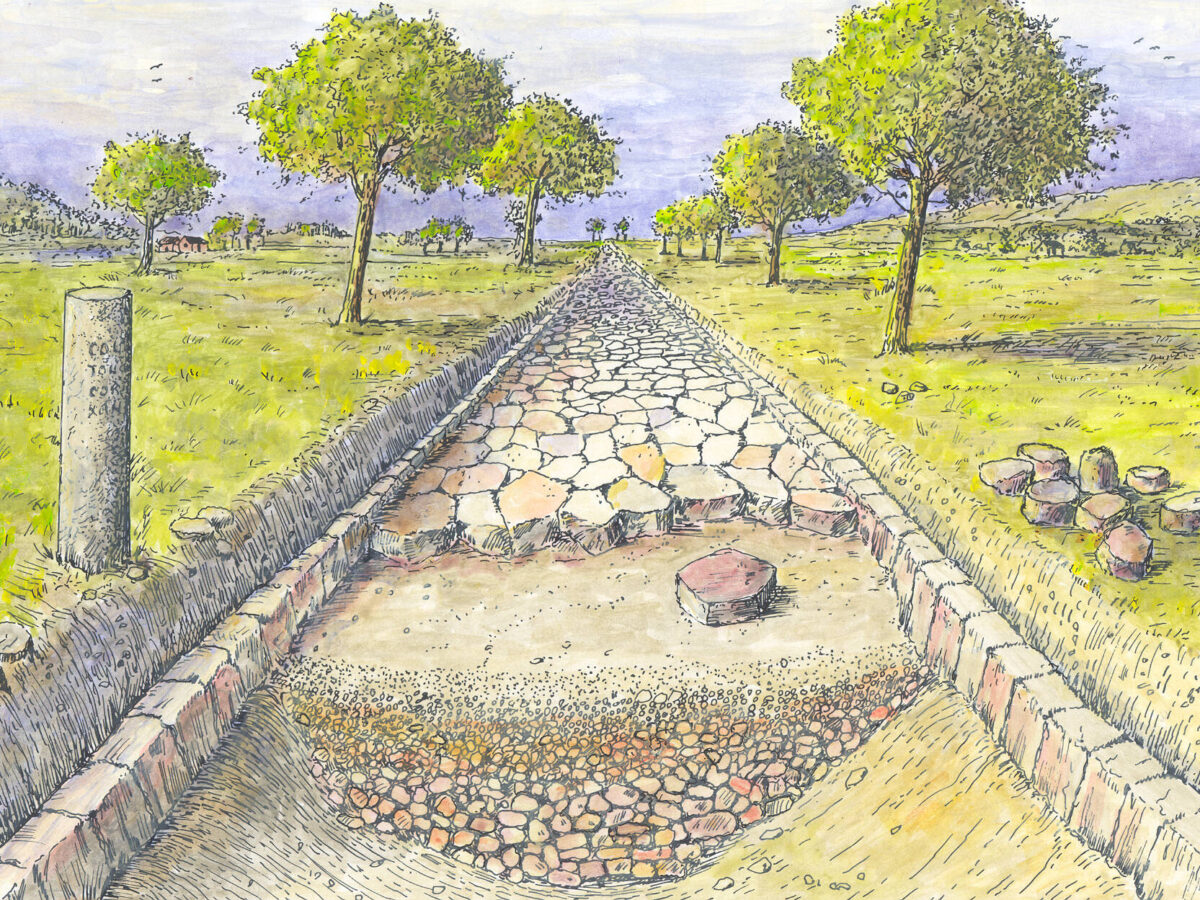New piece of Via Belgica in Houthem helps the imagination
Author: Harry Lindelauf
Photography: Philip Driessen

A new section of the Via Belgica opposite Château Sint Gerlach in Valkenburg-Houthem will help visitors gain a better picture of Roman South Limburg 2000 years ago. The replica, ten metres long and eight metres wide, is therefore a welcome addition to the visible and tangible Roman heritage in the basement of Hotel Derlon in Maastricht and in the Thermenmuseum in Heerlen.
The idea arose within the Houthem-Sint Gerlach Local History Association after gravel layers were discovered here in the ground in 2017. According to archaeologists, this is indirect evidence of the Via Belgica, which is presumed to run beneath the current road between Meerssen and Valkenburg. “There was talk about it within our village community and at some point the idea arose: let’s make the Roman road visible,” says chairman Jos Lodewick of the local history association.
Let’s make the Roman road visible— Jos Lodewick | Houthem–St. Gerlach Local History Association
Quick results thanks to cooperation
The new piece of Via Belgica does not connect literally but certainly figuratively: the idea brought together in record time a range of people and parties, from alderman Meijers of Valkenburg, former provincial deputy Burlet of the Province of Limburg, contractor Laudy and Moonen-Wanders to curator Karen Jeneson of the Thermenmuseum as expert. The “man with the oil can” behind it all is Camille Oostwegel Sr. His motives: “It was our ambition to realise this replica because of its tourist value and because of its archaeological importance.” His interest in the past is not a fleeting one: as a 15-year-old, Camille Oostwegel already had his own museum with fossil and archaeological finds and self-stuffed animals.


New milestone
Also special is the contribution of Brother Leo of the Abbey of Sint Benedictusberg in Mamelis. He chiselled the inscriptions into a replica of a Roman milestone. Christian Kicken supplied and translated the texts from Latin for an information board. The harmonious cooperation of all parties involved also produced rapid results: the money was secured through subsidies and sponsorship, the municipal permit was granted, and in the summer of 2021 the Via Belgica replica became a reality. Employees of Laudy together with volunteers of the local history association prepared the necessary terrain at the kitchen garden of Château Sint Gerlach with a suitable sublayer. On top of that a road surface of boulder clay and gravel was applied, just like the Romans, who worked with local materials. The lens-shaped road (because of the drainage) does not at all resemble the famous pictures of the Via Appia in Rome, which after 2000 years is still neatly paved with large stone blocks.
Ground radar
The construction of the road is not a matter of discussion. Less factual is the exact route of the original Via Belgica through the Geul valley towards Klimmen. Karen Jeneson researched this. She looked for clues, of course, such as the earlier traces discovered at the Putweg in Houthem. But even the use of ground radar and analyses based on modern detailed relief maps did not produce a definitive route. “The northern slope of the Geul valley has always been very intensively used for agriculture. In Roman times, two metres of soil were deposited from the slope into the valley; in the Middle Ages another four metres. That makes it very difficult to find traces of the road,” explains Karen Jeneson.
Ravensbos
Much easier to find are the remains of Roman habitation in the Geul valley. No fewer than twelve villae rusticae have been discovered, many graves near Strabeek and the foundation of a tower on the Goudsberg. Karen Jeneson suspects that the Roman remains at the foot of the Ravensbos do not belong to a villa rustica (a farm, in other words): “To begin with, the location of the buildings is very atypical for a villa rustica. The buildings also have unusual shapes and there is a foundation measuring ten by ten metres. Perhaps this was a relay station for horses and draught animals with an inn. I would really like to investigate that sometime.”
Perhaps this was a relay station for horses and draught animals with an inn. I would really like to investigate that sometime.— Karen Jeneson | Curator, Thermenmuseum

